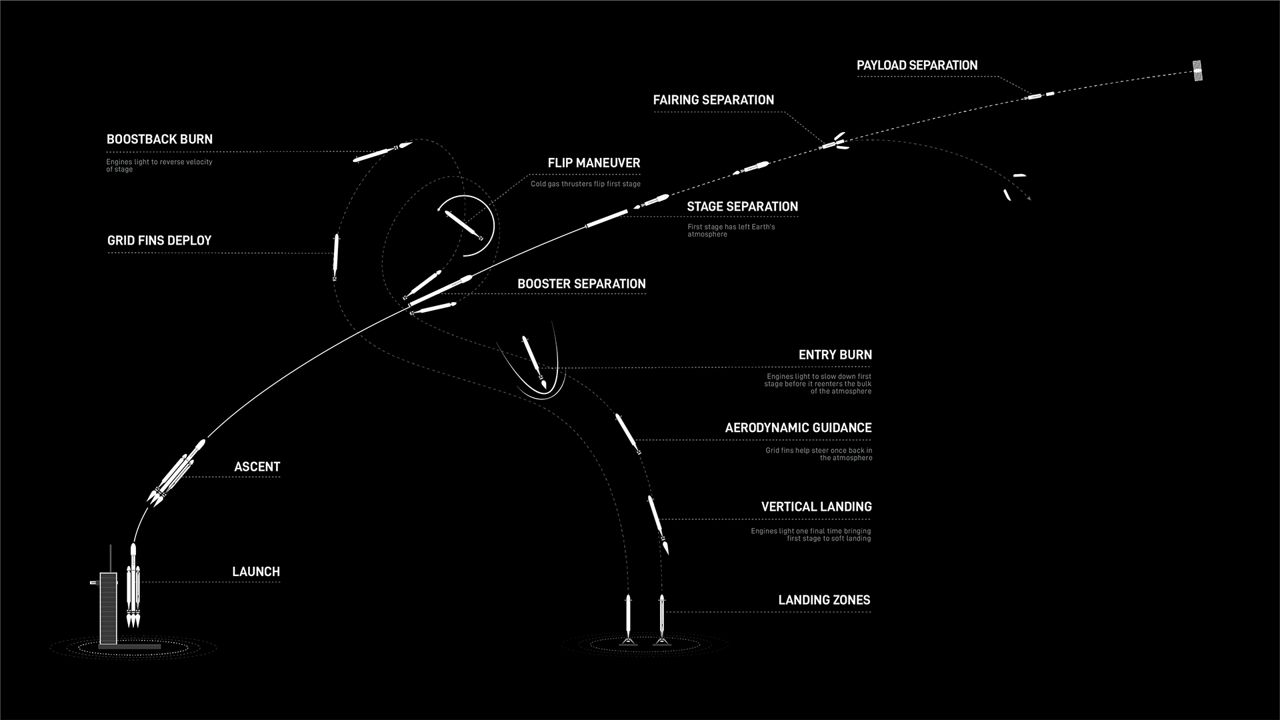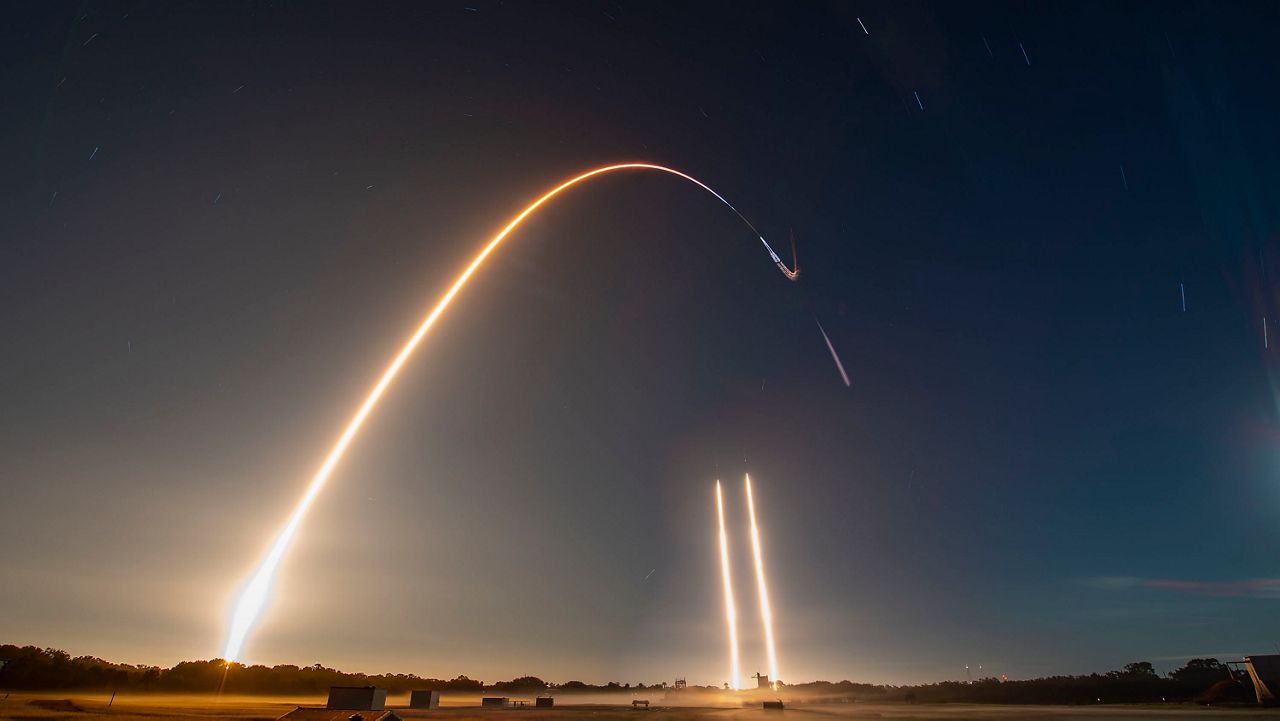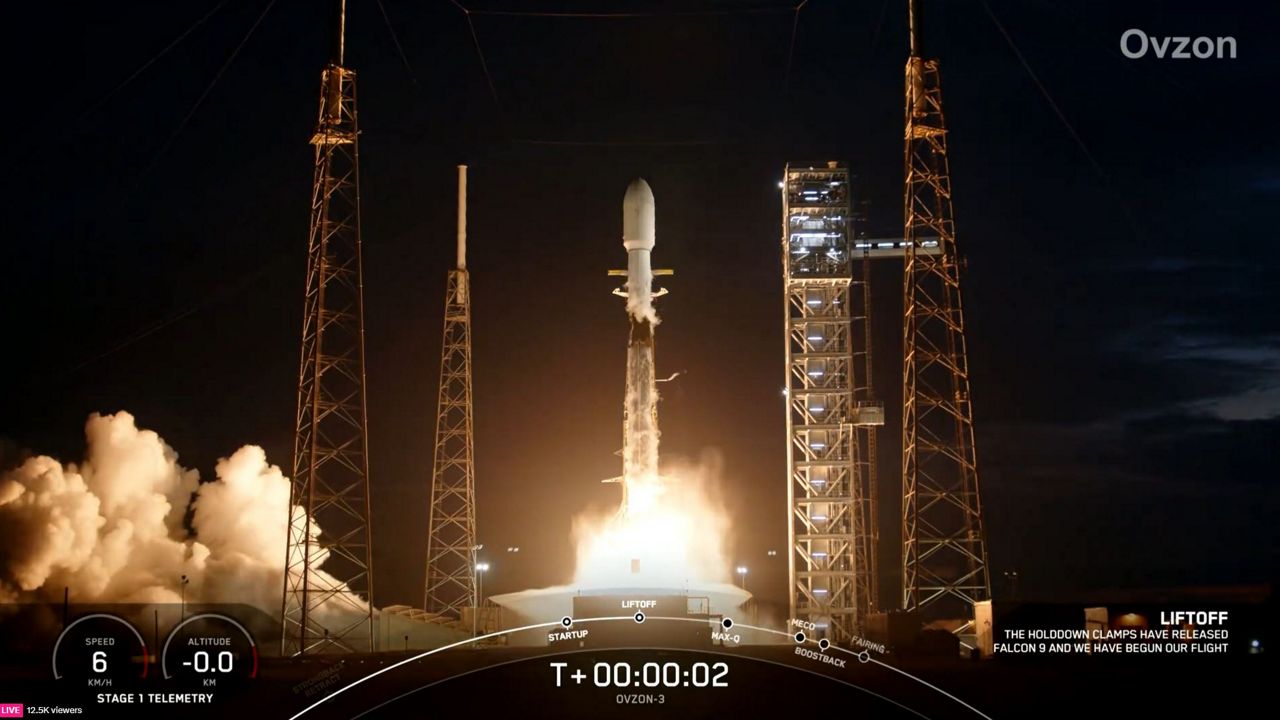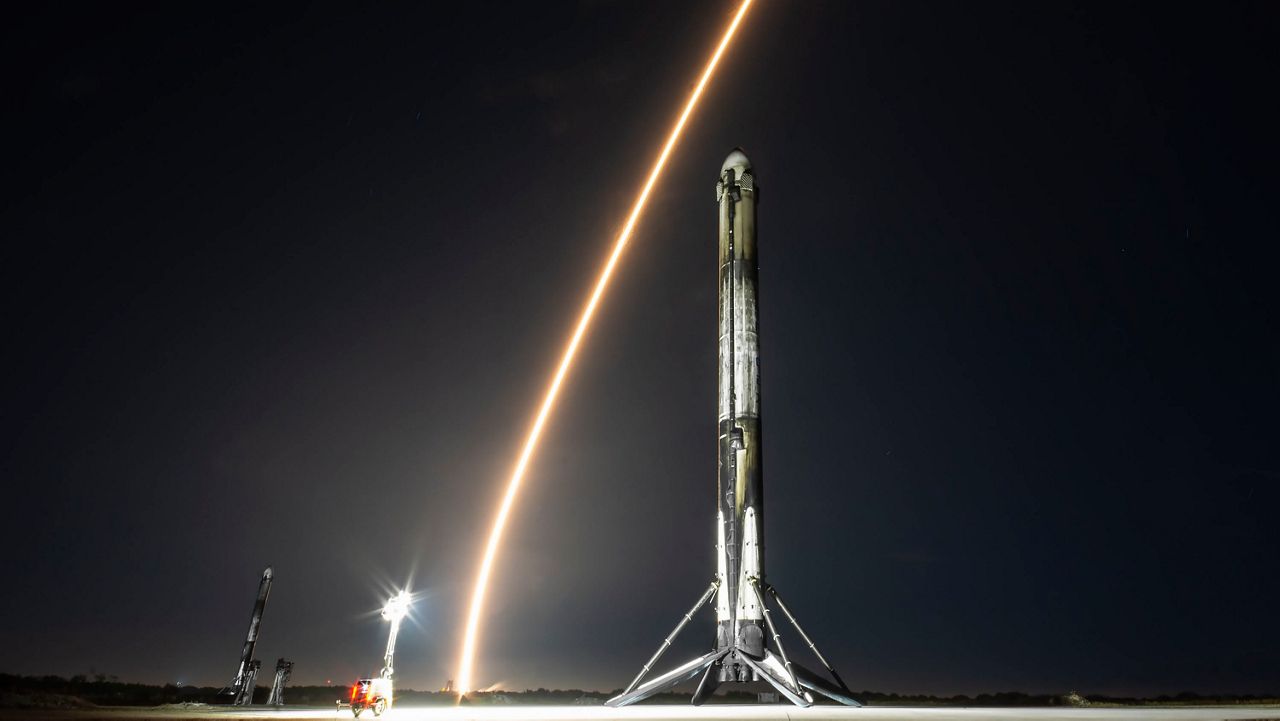KENNEDY SPACE CENTER — SpaceX successfully launched the first of two planned missions Thursday night, with the Falcon Heavy USSF-52 mission lifting off on its foruth try.
What You Need To Know
- The USSF-52 mission launched at 8:07 p.m. ET on Thursday, Dec. 28
- The Falcon Heavy rocket took off from Launch Complex 39A
- The USSF-52 mission launched a Boeing space plane
- The X-37B Orbital Test Vehicle is an unmanned vehicle
- Get more space coverage here ▶
After scrubbing the mission several times, SpaceX finally launched a Boeing space plane at 8:07 p.m. ET on Dec. 28 from Launch Complex 39A at NASA’s Kennedy Space Center.
The 45th Weather Squadron gave an 80% chance of favorable conditions, with the only concern being the Cumulus Cloud Rule.
Failed launch attempts series
This mission — in partnership with Space Systems Command — was supposed to be launched a couple of times.
Sunday, Dec. 10: The launch was set for Sunday at 8:14 p.m. ET, but it was pushed back to the following day because the weather conditions were supposed to be better.
Monday, Dec. 11: This second attempt had a 10-minute launch window set for 8:14 p.m. ET, but SpaceX pushed it back to 8:24 p.m. ET before scrubbing the flight entirely. A “ground side issue” came up and SpaceX was forced to stand down.
Tuesday, Dec. 12: This third attempt was scrubbed the night before because SpaceX wanted “to perform additional system checkouts”.
SpaceX had hoped for a double launch with this mission and a Starlink mission a few times, but it was not meant to be.
Going up
The Falcon Heavy has three Falcon 9 boosters. After the stage separation, the two side boosters landed on SpaceX’s landing zones 1 and 2 at Cape Canaveral Space Force Station as sonic booms were heard.
The Falcon Heavy’s core booster B1084 (the center booster) is going to be jettisoned into the Atlantic Ocean. This will be its first mission.
The two side boosters, B1064 and B1065, already have four successful missions on their resume:

About the mission
The USSF-52 will send up the X-37B Orbital Test Vehicle, a seventh mission for the Boeing-made space plane.
Onboard the unmanned space plane, also known as OTV-7, will be a series of top secret experiments, with the U.S. Space Force only stating the craft will be doing such tests as “operating in new orbital regimes, experimenting with space domain awareness technologies and investigating the radiation effects to NASA materials.”
“We’re nearly complete with the pre-launch work for our next National Security Space launch, which is the third Falcon Heavy used to launch a national security payload,” stated Brig. Gen. Kristin Panzenhagen, program executive officer for Assured Access to Space and Commander, Space Launch Delta 45, in a Space Systems Command (SSC) press release.
Neither the SSC nor the U.S. Space Force stated how long the X-37B will be in orbit for the USSF-52 mission, but in November 2022 when it came in for its landing of its last mission, it spent 908 days in orbit.
When the X-37B does eventually return to Earth, people can expect to hear a sonic boom.
About the X-37B Orbital Test Vehicle
One-fourth the size of the space shuttle, this Boeing-made craft is designed to operate in low-earth orbit, which is about 150 to 500 miles above the round Earth, described Boeing.
While not stating exactly what the X-37B is made of, Boeing stated the space plane was built using a lighter-composite structure than aluminum.
“USSF-52 is carrying the seventh mission of the X-37B Orbital Test Vehicle, which is an experimental test program that demonstrates technologies for a reliable, reusable, unmanned space test platform for the U.S. Space Force,” stated the SSC.
Watch Falcon Heavy launch the USSF-52 mission to orbit https://t.co/zrk4JcZ9Pt
— SpaceX (@SpaceX) December 29, 2023







